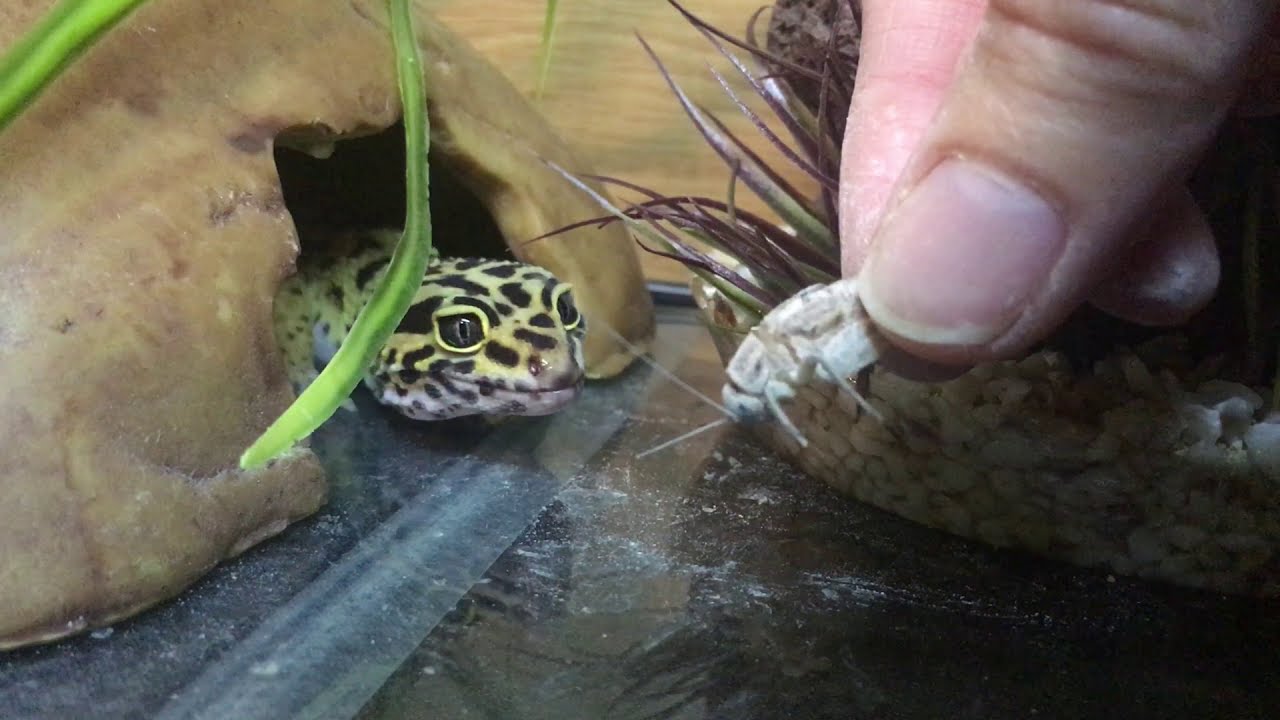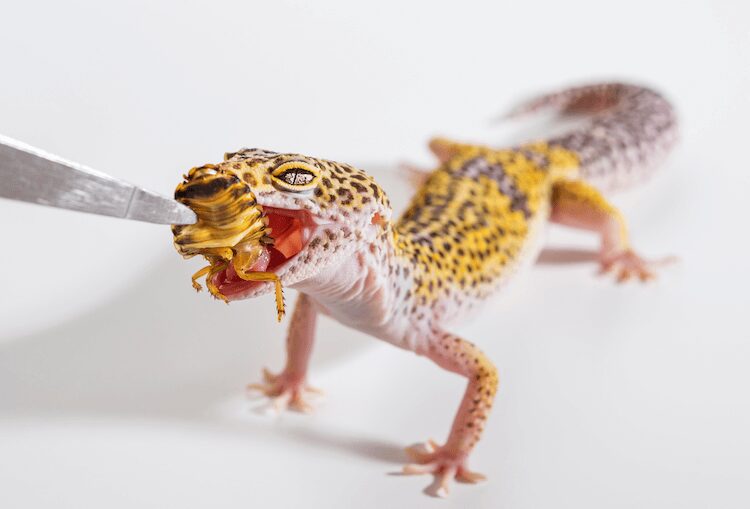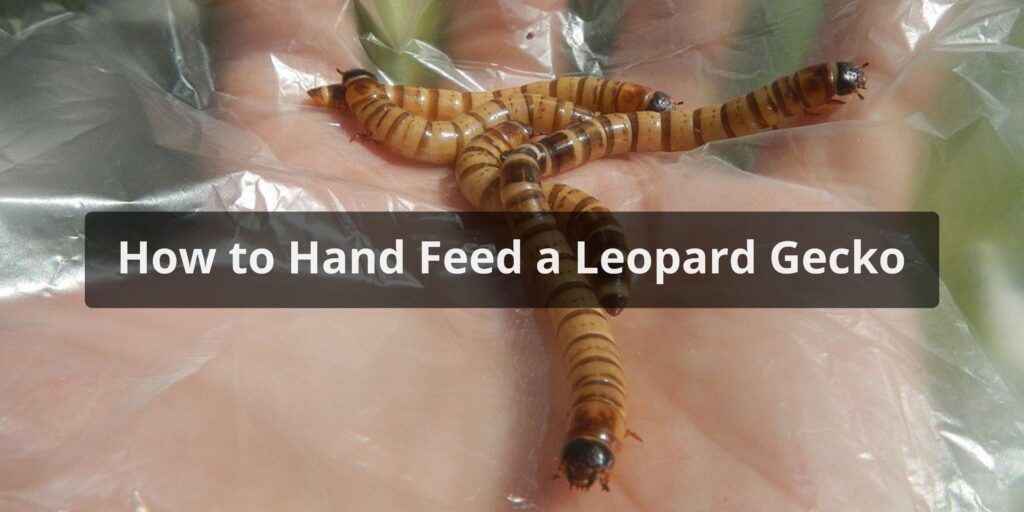Leopard geckos make great pet reptiles for beginner and experienced owners alike. They are generally docile, hardy, and relatively easy to care for. One way to bond with your leopard gecko and monitor its health is to hand feed it. Hand feeding allows you to directly observe your gecko’s eating habits and ensures it is getting proper nutrition. Follow these tips for successful how to hand feed leopard gecko.
Prepare Yourself and Your Space

Before attempting to hand feed your leopard gecko, make sure you and the environment are ready:
- Wash your hands thoroughly to remove any odors from food or chemicals like soap. Geckos rely on scent and may refuse food that smells unnatural.
- Trim your fingernails short. This prevents scratches if your gecko gets startled.
- Remove any jewelry from your hands and wrists. Your gecko may get toes or teeth caught.
- Pick a quiet space without distractions to hand feed. Turn off TVs and radios and keep other pets away.
- Sit down and remain calm and quiet. Any loud noises or quick movements can stress your gecko.
- Have a shallow dish or feeder cage ready nearby to put the gecko in if needed.
Prepare Nutritious Gecko Food

Leopard geckos are insectivores, meaning they eat insects and invertebrates. Some good options for hand feeding include:
- Live insects like small crickets, mealworms, waxworms, or dubia roaches. Gut load these with nutritious foods first.
- Chopped up earthworms or nightcrawlers. These are soft and palatable.
- Canned grasshoppers or cockroaches available at pet stores. Look for reputable brands.
- Meal replacement powders mixed with water. Choose gecko-safe flavors without citrus.
- Baby food like chicken or turkey, diluted 50/50 with water. Check for added vitamins and minerals.
Avoid overfeeding waxworms or meal replacement powders, as these can cause obesity. Offer a variety for balanced nutrition.
Get Your Gecko’s Attention

Once you and the food are ready, get your leopard gecko interested in hand feeding:
- Place a small amount of food, like 2-3 insects, in a shallow lid. Avoid overwhelming your gecko.
- Set the dish in or near your gecko’s tank and wait nearby quietly.
- Gently tap the tank or rub your fingers over the lid to create movement. This catches your gecko’s attention.
- You can also move the feeding dish closer once your gecko shows interest. But don’t force interactions.
- Allow the gecko to approach and eat on its own. Never grab at or chase your gecko to hand feed.
Present Food in Your Palm
When your leopard gecko is accustomed to being hand fed from a dish, you can attempt feeding directly from your hand:
- Place a small piece of food in your palm and keep your hand low and flat.
- Allow your gecko to approach and eat from your hand on its own.
- Keep still and avoid sudden movements. Blink slowly to appear non-threatening.
- If your gecko seems afraid, return to feeding from the dish until it’s more comfortable.
- When your gecko eats confidently from your hand, you can add more pieces of food. But don’t overwhelm it.
Know When to Stop
To prevent overfeeding, pay attention to when your leopard gecko loses interest:
- Healthy leopard geckos know when they are full and will stop eating.
- If your gecko licks its lips, turns away, or walks away after a few pieces, end the session.
- Clear away any uneaten food so it doesn’t spoil in the tank and make your gecko sick.
- Generally geckos should not be fed more than 1-2 times daily as juveniles and every 2-3 days as adults.
- Overfeeding can cause health issues like obesity, nutritional imbalance, and potential bone disease from excess vitamin D3.
Hand feeding is a great way to monitor your leopard gecko’s health and build trust. But move at your gecko’s pace, keep sessions short and positive, and watch for signs your gecko is full. With patience and care, hand feeding can be an enriching experience for both of you!
Conclusion
Hand feeding provides an opportunity to bond with your leopard gecko while keeping a close eye on its nutrition and health. By preparing a calm environment, nutritious insect-based foods, and letting your gecko approach at its own pace, you can make hand feeding safe and successful. Pay close attention to your gecko’s body language and appetite cues to avoid overfeeding. With time and patience, hand feeding will become an enjoyable routine for both pet and owner.
FAQs About How to Hand Feed Leopard Gecko
What is the best way to hold the food for hand feeding?
To hand feed a leopard gecko effectively, use feeding tweezers or your fingers to hold the food item. Gently wiggle or dangle the insect near your gecko’s mouth, allowing it to strike and grab the prey. Be patient and avoid forcing the food into their mouth.
Can hand feeding help with taming a leopard gecko?
Yes, hand feeding can aid in taming a leopard gecko. It associates your presence with a positive experience (food), helping build trust over time. Through consistent, gentle interactions during feeding, your gecko may become more accustomed to your presence and less fearful.
How often should I hand feed my gecko?
Hand feeding can be done occasionally to strengthen the bond with your gecko or when you need to monitor their food intake. It’s not necessary for every meal. Typically, you can hand feed once or twice a week, with regular feeding using dishes for the rest of their meals.
What should I do if my gecko refuses hand-fed food?
If your gecko refuses hand-fed food, don’t force it. Offer the food in a dish as usual, ensuring it’s appropriately sized and nutritious. Occasionally trying hand feeding and being patient can help, but remember that not all geckos will immediately accept food in this manner.
Are there any risks or precautions for hand feeding?
When hand feeding, be cautious of accidental bites, though leopard geckos have small teeth and weak jaws. Ensure the prey item is an appropriate size to avoid choking hazards. Wash your hands before and after handling to maintain hygiene and minimize stress to your gecko.



